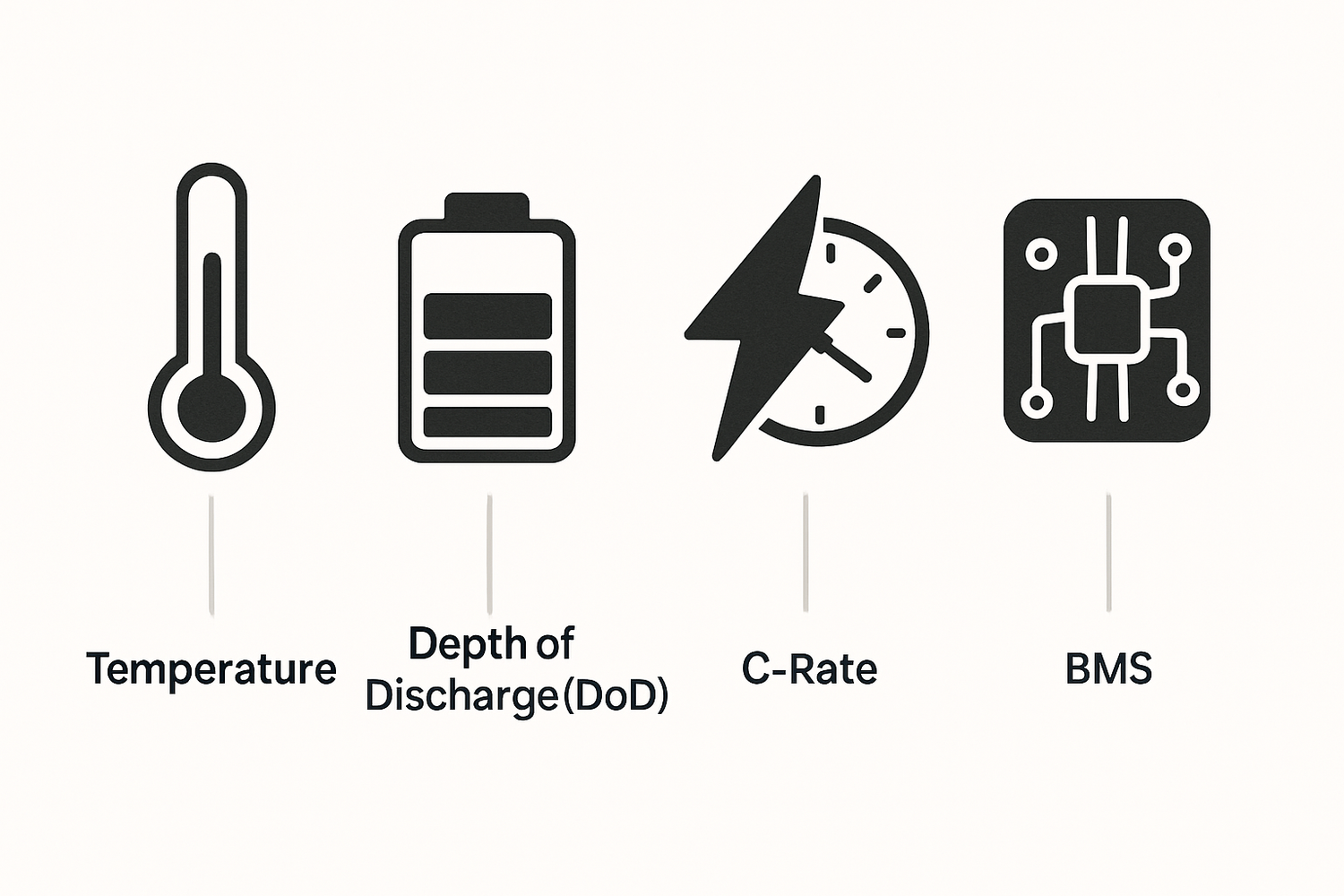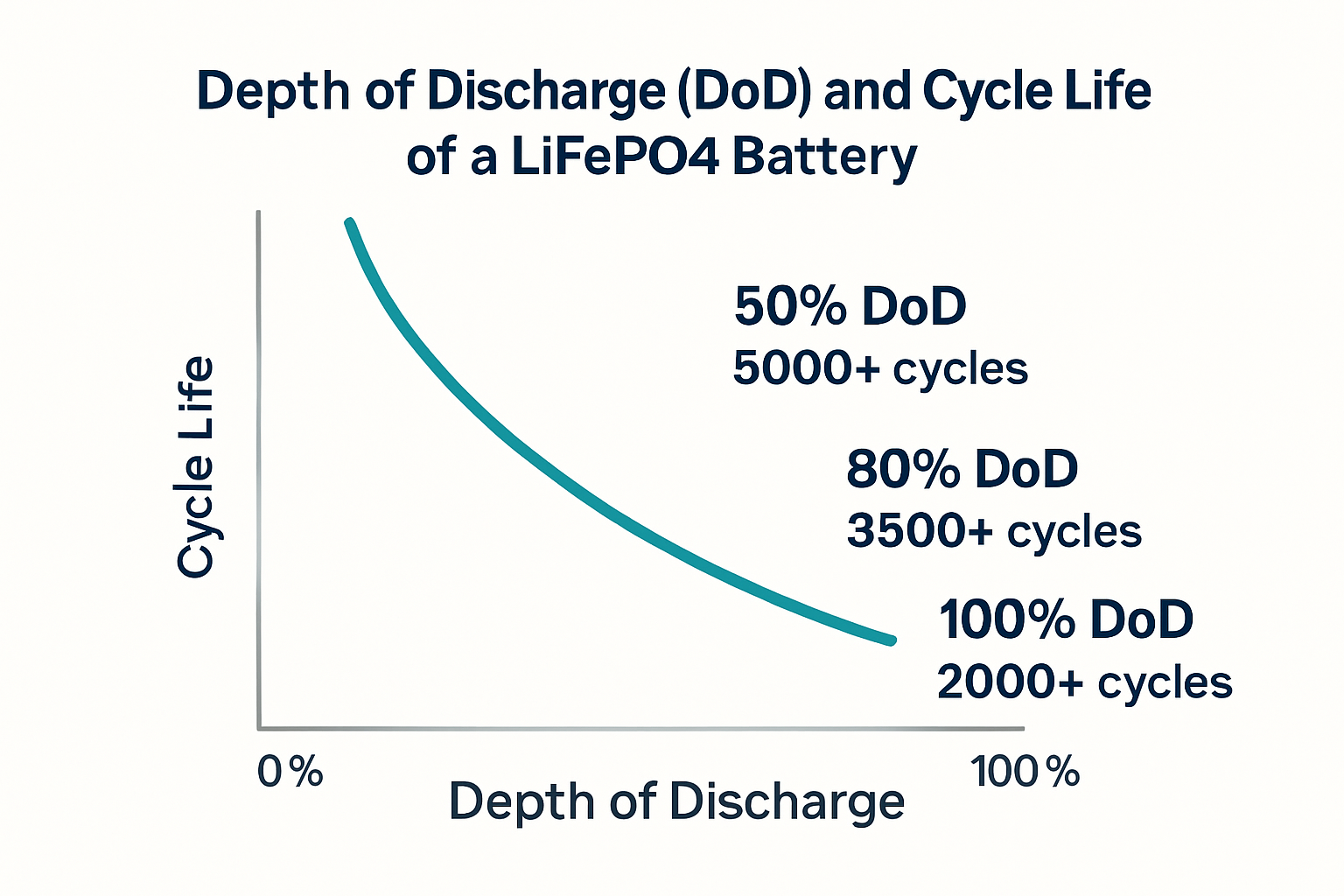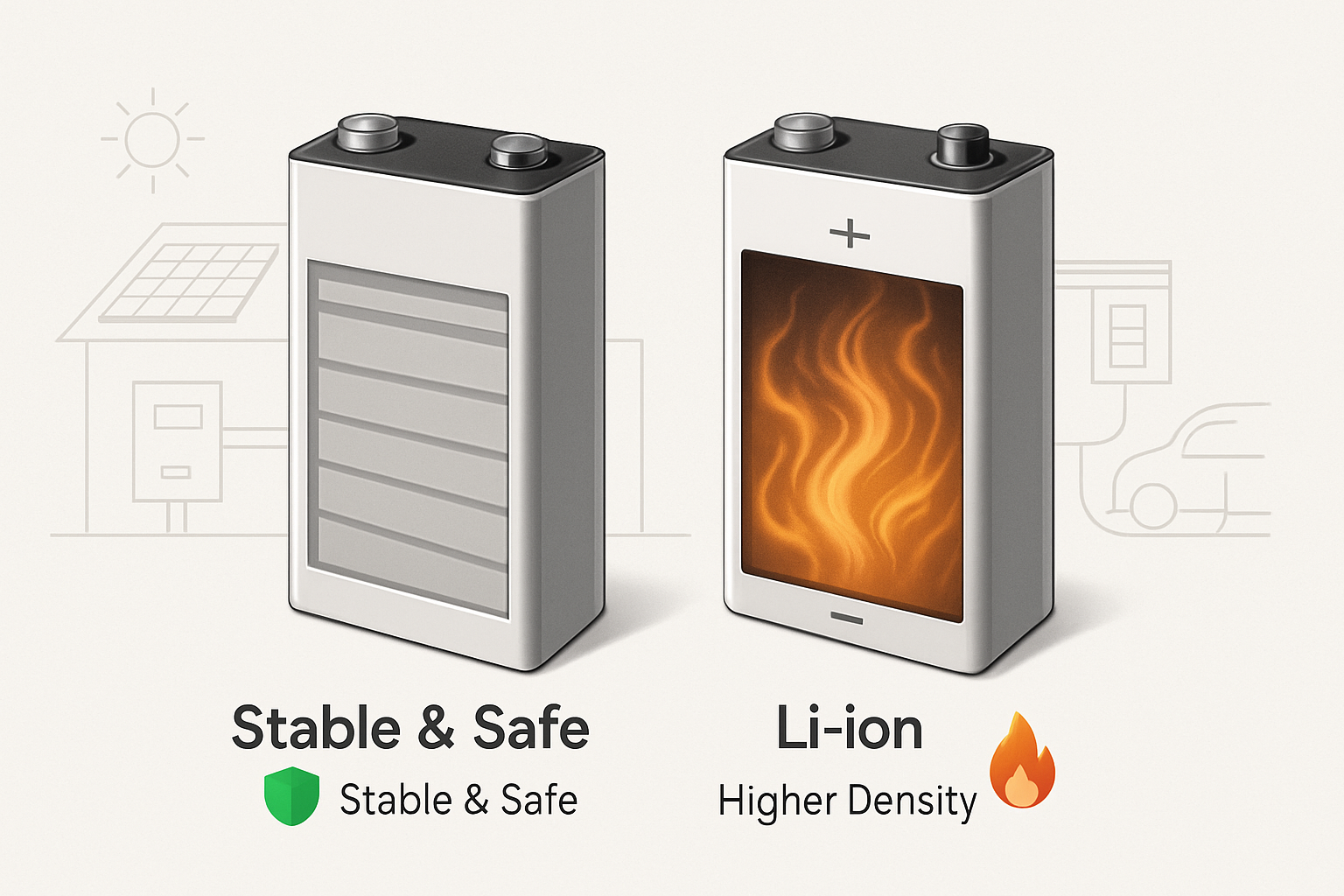When you invest in a solar energy system, you're investing in long-term energy independence. The solar panels might get the attention, but the battery system is the heart of that independence. It determines whether you have power at night or during an outage. This makes battery lifespan one of the most critical factors in your decision. Among the various technologies available, Lithium Iron Phosphate (LiFePO4) batteries have become a cornerstone of reliable energy storage, largely due to their impressive longevity.
Understanding the real-world lifespan of a LiFePO4 battery goes beyond a simple number on a datasheet. It involves understanding how you use the battery, the environment it operates in, and the quality of its construction. This guide provides a thorough look at the factors that define LiFePO4 battery longevity, helping you protect your investment and get the most out of your energy storage system.
Chapter 1: The Core Metrics of LiFePO4 Battery Lifespan
To accurately discuss how long LiFePO4 batteries last, we first need to define what "lifespan" means in this context. It's not a single measure but a combination of factors that describe a battery's useful life.
1.1 Cycle Life: The Foundation of Longevity
The most common metric for battery lifespan is cycle life. A "cycle" refers to one full charge and discharge of the battery. For instance, charging a battery from 0% to 100% and then using it until it's back at 0% is one complete cycle. LiFePO4 batteries are known for their high cycle counts, often rated for 3,000 to 5,000 cycles or more before their capacity significantly degrades. For a typical home solar system that cycles daily, this can translate to a lifespan of 10 to 15 years. You can learn more in our detailed article, LiFePO4 Cycle Life Explained: A Deep Dive into Longevity.
1.2 Calendar Life vs. Cycle Life
While cycle life measures wear from use, calendar life refers to the battery's lifespan over time, regardless of how many cycles it completes. All batteries degrade slowly over time due to internal chemical processes. High-quality LiFePO4 batteries can have a calendar life of over 10 years, thanks to their stable chemistry. However, factors like high temperatures or being stored at a very high or very low state of charge can shorten this calendar life.
1.3 State of Health (SoH) and End of Life (EoL)
A battery's "end of life" (EoL) for energy storage applications doesn't mean it stops working entirely. It means the battery's State of Health (SoH) has declined to a point where it can no longer hold a sufficient amount of its original capacity. Typically, the industry defines EoL as the point when a battery can only hold 70-80% of its initial rated capacity. Even after reaching this point, the battery may still be usable for less demanding applications.
Chapter 2: Key Factors That Influence LiFePO4 Longevity
A battery's rated lifespan is based on ideal laboratory conditions. In the real world, several operational and environmental factors determine how long your LiFePO4 battery will actually last.
2.1 Depth of Discharge (DoD)
Depth of Discharge (DoD) refers to the percentage of the battery's capacity that has been used. For example, if you use half of your 10 kWh battery's stored energy, its DoD is 50%. There is a strong inverse relationship between DoD and cycle life: shallower discharges lead to a much longer life. Consistently discharging the battery to 100% is more stressful than regularly discharging it to only 80%. For a deeper technical look, see our article on DoD vs. Temperature: Key Factors in LiFePO4 Battery Life.
| Depth of Discharge (DoD) | Estimated Cycle Life |
|---|---|
| 100% | ~3,000 Cycles |
| 80% | ~5,000 Cycles |
| 50% | ~8,000+ Cycles |
Note: These are illustrative values. Actual cycle life varies by manufacturer and cell quality.
2.2 Operating Temperature
Temperature is one of the most critical factors affecting battery health. LiFePO4 batteries perform best within a moderate temperature range, typically between 20°C and 30°C (68°F to 86°F).
- High Temperatures: Heat accelerates the chemical reactions inside the battery, leading to faster degradation and a shorter calendar life. The U.S. Department of Energy notes that storing batteries in high temperatures is one of the leading causes of premature failure.
- Low Temperatures: Extreme cold reduces a battery's available capacity and efficiency. Charging a LiFePO4 battery below freezing (0°C or 32°F) can cause irreversible damage known as lithium plating, which permanently reduces capacity.
2.3 Charge and Discharge Rates (C-Rate)
The C-rate measures how quickly a battery is charged or discharged relative to its capacity. A 1C rate on a 100Ah battery means charging or discharging it at 100 amps. While LiFePO4 batteries can handle high C-rates, consistently using lower rates (e.g., 0.2C to 0.5C) is much gentler on the battery's internal components and contributes to a longer life. This is why proper system design, matching the battery bank to the load requirements, is so important.
2.4 The Role of the Battery Management System (BMS)
The Battery Management System (BMS) is the brain of the battery pack. A high-quality BMS is essential for longevity. It protects the cells from damaging conditions such as:
- Over-charging (voltage too high)
- Over-discharging (voltage too low)
- Over-current during charge or discharge
- Extreme temperatures (both high and low)
Chapter 3: LiFePO4 vs. Other Chemistries: A Lifespan Comparison
The long life of LiFePO4 batteries is a key reason they are increasingly chosen for stationary energy storage. The International Energy Agency (IEA) notes that LFP (LiFePO4) is the fastest-growing segment in battery chemistry, dominating energy storage deployment due to its lower cost and longer cycle life. Let's see how they compare to other common battery types.
3.1 LiFePO4 vs. Lead-Acid
This is where LiFePO4 technology truly stands out.
| Feature | LiFePO4 Battery | Lead-Acid Battery (AGM/Gel) |
|---|---|---|
| Typical Cycle Life | 3,000 - 5,000+ cycles | 300 - 1,000 cycles |
| Recommended DoD | 80-100% | 50% |
| Calendar Life | 10-15+ years | 3-7 years |
| Maintenance | None required | Regular checks (especially for flooded types) |
3.2 LiFePO4 vs. Other Lithium-Ion (NMC/NCA)
LiFePO4 is a type of lithium-ion battery, but it differs from chemistries like Nickel Manganese Cobalt (NMC) or Nickel Cobalt Aluminum (NCA) commonly used in electric vehicles. While NMC and NCA offer higher energy density (more power in less space), LiFePO4 provides superior cycle life and thermal stability. This makes LiFePO4 a safer and more durable choice for home and off-grid solar applications where space is less of a constraint and longevity is paramount. For more on this, read LiFePO4 vs. Li-Ion Lifespan: Which Is Best for Solar?.
Chapter 4: Practical Strategies to Maximize Your Battery's Life
Achieving a 10+ year lifespan from your LiFePO4 battery system is not just possible; it's achievable with proper care and system design. Here are actionable steps you can take.
4.1 Smart System Design
The foundation for a long battery life is laid during the design phase. Sizing your battery bank correctly is crucial. A slightly oversized bank will operate at a lower average DoD, which can dramatically extend its cycle life. Integrating your LiFePO4 batteries with a high-quality hybrid inverter and solar panels creates a seamless home energy storage system where all components work in harmony to optimize performance and longevity. Understanding the complete system is key, as detailed in this ultimate reference on solar storage performance.
4.2 Optimal Charging and Discharging Habits
While LiFePO4 batteries are resilient, certain habits can help you get even more life out of them.
- Avoid Extremes: Whenever possible, avoid leaving the battery fully charged at 100% or fully depleted at 0% for extended periods. Operating within a 20% to 80% state of charge window is ideal for maximizing cycles.
- Set Correct Parameters: Ensure your solar charge controller and inverter are configured with the correct voltage settings for your LiFePO4 battery. This prevents chronic over or under-charging.
- Periodic Full Charge: It is beneficial to perform a full 100% charge periodically (e.g., once a month) to allow the BMS to re-balance the cells accurately.
4.3 Proper Storage and Maintenance
If you need to store your batteries for an extended period (e.g., for a seasonal cabin), follow proper storage procedures. The ideal storage condition is in a cool, dry place at approximately a 50% state of charge. This minimizes calendar aging. Our Ultimate LiFePO4 Battery Storage & Maintenance Roadmap provides a complete checklist for this process.
A Long-Term Partnership in Energy
A LiFePO4 battery is more than just a component; it's a long-term investment in your energy security. Its impressive lifespan, backed by stable and safe chemistry, provides a reliable foundation for any solar power system, from off-grid homes to comprehensive residential energy storage. As the International Renewable Energy Agency (IRENA) projects battery storage costs to continue falling, the value proposition for durable technologies like LiFePO4 will only grow stronger.
By understanding the factors that influence its longevity—from Depth of Discharge and temperature to the quality of the BMS—you can actively participate in maximizing that lifespan. With proper system design and mindful usage, your LiFePO4 battery system can deliver clean, reliable power for well over a decade, empowering you to achieve true energy independence.
Disclaimer: The information provided in this article is for educational purposes only. It is not intended as financial, investment, or legal advice. Please consult with a qualified professional before making any decisions related to installing or maintaining an energy storage system.





Leave a comment
All comments are moderated before being published.
This site is protected by hCaptcha and the hCaptcha Privacy Policy and Terms of Service apply.